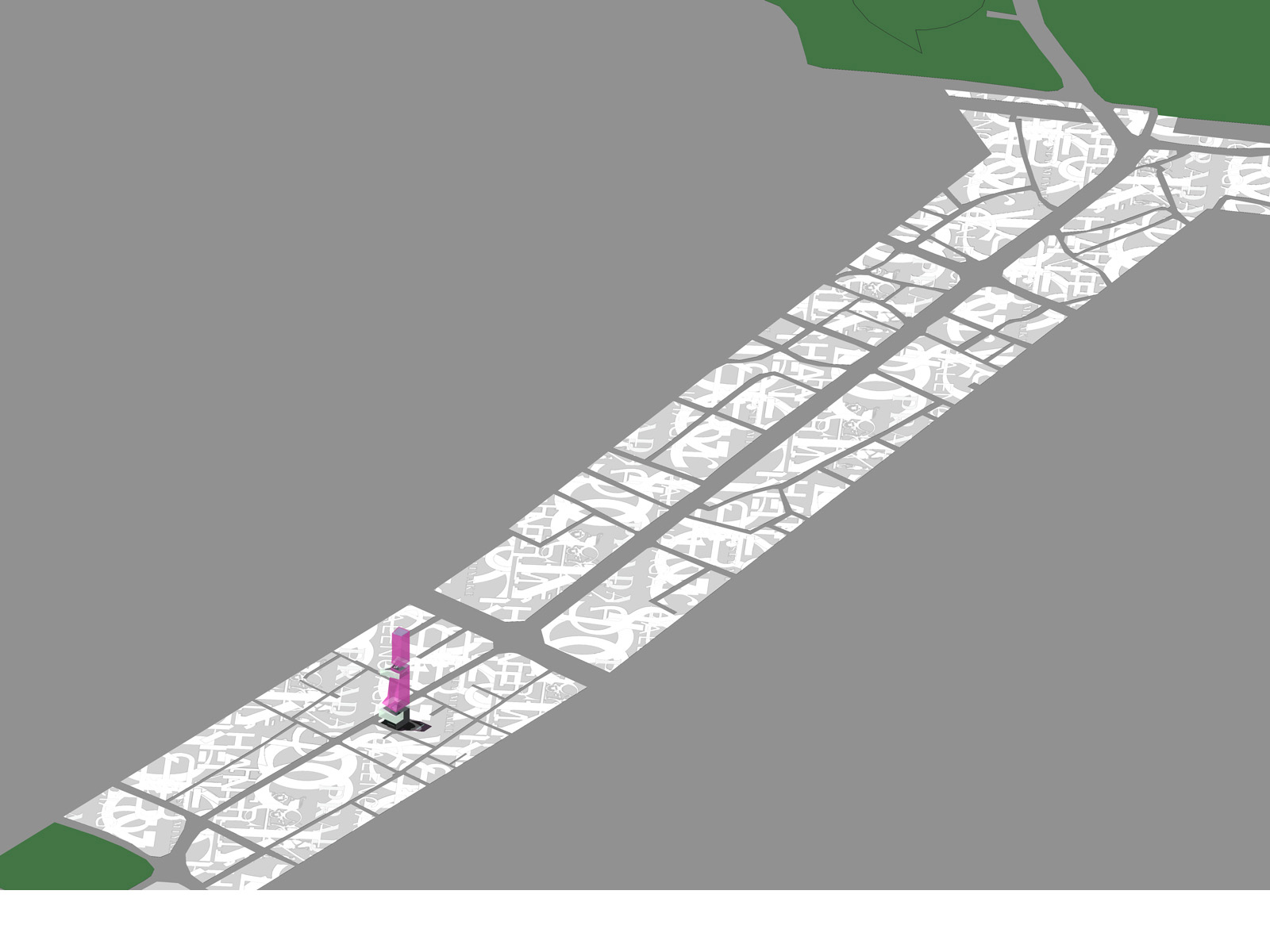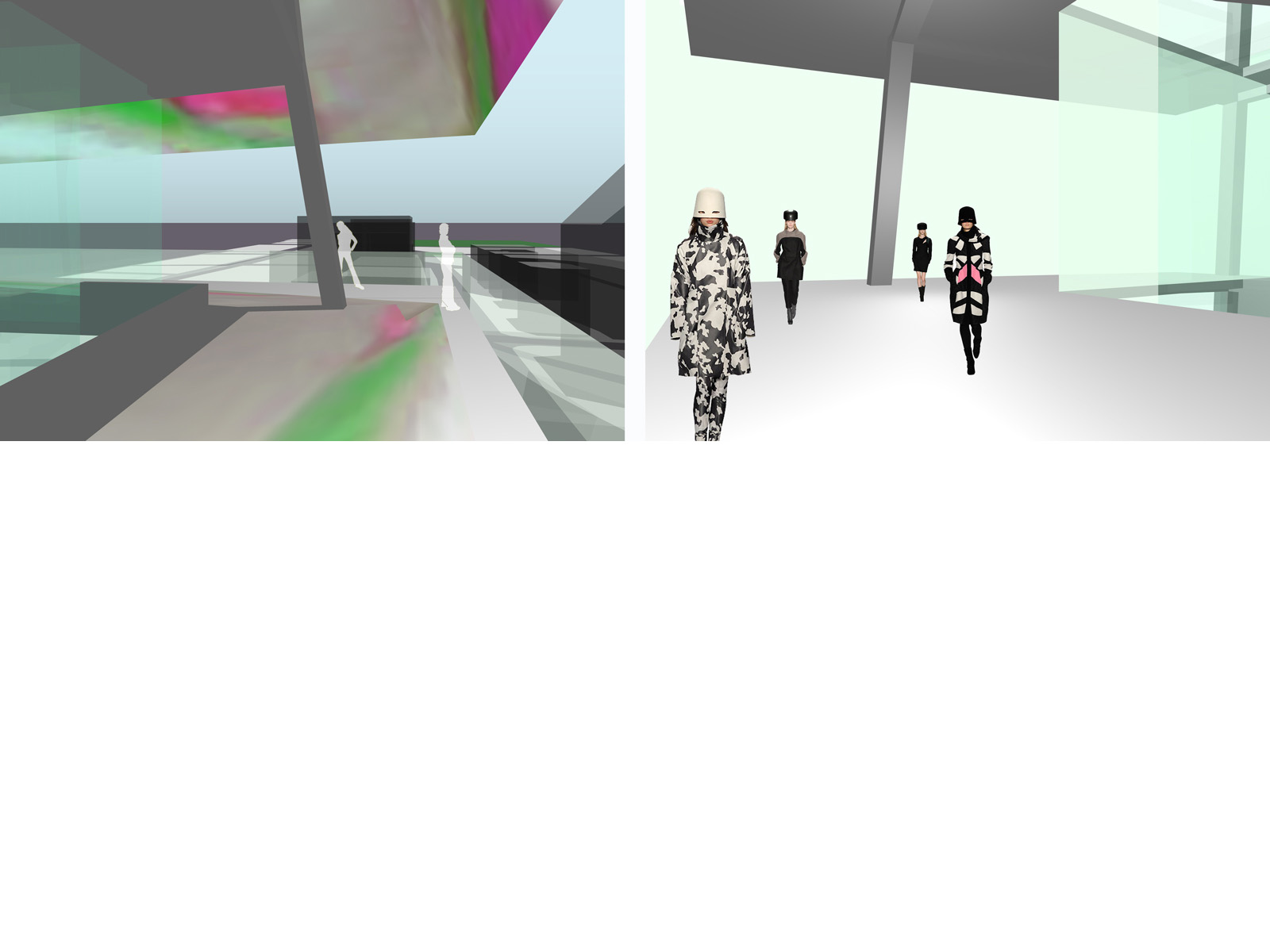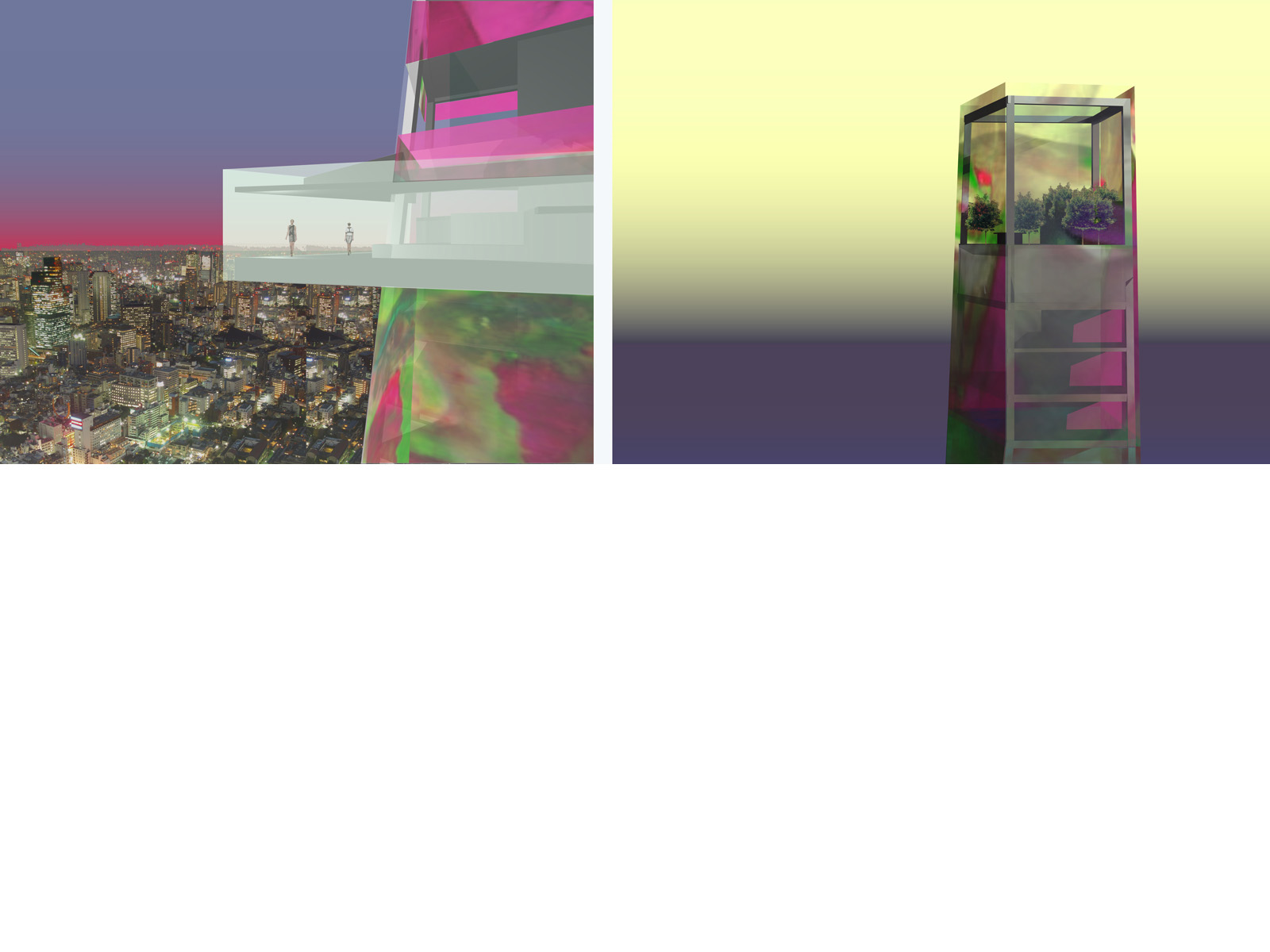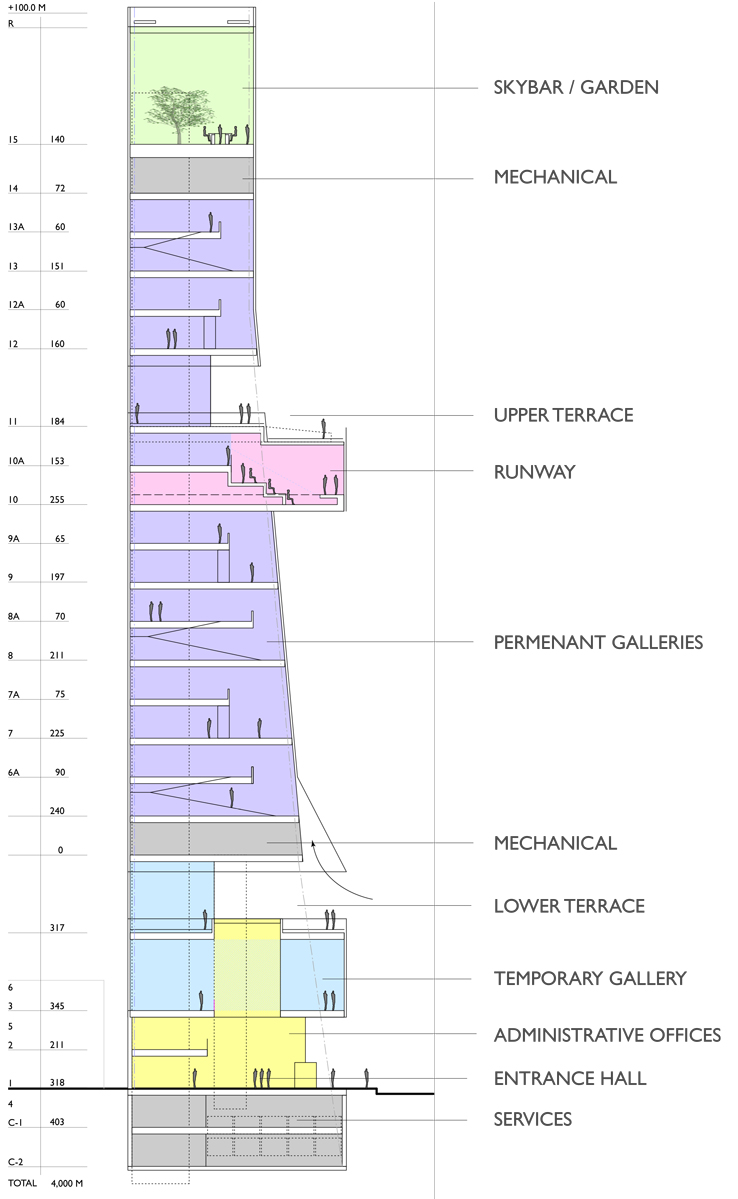The building is located on the eastern portion of Omotesando Street, in close proximity to many fashion houses. 100-meters in height, it towers over the surrounding buildings, acting as a beacon and a symbol of the fashion district.

The Lower Terrace is positioned at the same elevation as the upper stories of the neighboring buildings. It acts both as a viewing platform and as a vertical link between temporary and permanent galleries. The building skin splays out above the terrace to provide additional shelter.
The Temporary Gallery forms a hook around the central lobby atrium, invoking a sense of rotating movement. The translucent glazed volume hovers over the sidewalk below, creating a seamless spatial transition between the street and the museum lobby. A grand spiral stair leads to the Lower Terrace above.
fashion by Narciso Rodriguez

The Runway is a stage for spectacle, and it is designed to function at several scales. Events can be viewed from the theatre itself, as well as from the street below or, when projected on the digital building skin, from elsewhere in the city. The runway is inserted into the permanent galleries, highlighting the relationship between production and product. The catwalk is V-shaped, which allows the action to be seen from both inside and outside; the apex of the V sets up a natural pivot point for the défilé. Stepped theater seating is positioned below the gallery. The runway element, located mid-way up the building, thrusts out into the public space and becomes an urban focal point.
The tower, with no structures of comparable scale nearby, terminates in the The Skybar / Garden, an experience juxtaposing an intimate garden with sweeping city views. Mechanical space is relegated to the level below; this allows the garden roof to be glazed, enhancing the sensation of floating atop a point in space.

The program elements are distributed vertically, thus referencing the various urban strata in its cross-section and reflecting the multiple scales of the urban experience - close-up, mid-range, and panoramic.
The Lobby and the entire building base are conceived of as an "urban lounge". Set back from the street, it has a continuous central skylit atrium, allowing all the spaces in the base to intermingle. A glass elevator provides access to the Temporary Gallery and Lower Terrace. The translucent Temporary Gallery hovers over the sidewalk, establishing a datum line on the street, while a grand stair links it to the terrace above. Permanent Galleries are designed as flexible, column-free loft spaces, with the city as a backdrop. The V-shaped Runway, inserted within the gallery, thrusts out dramatically from the body of the building. The locations of the two public terraces and the Skybar offer different perspectives on the city, with the Skybar / Garden at the building’s pinnacle creating a juxtaposition between the intimacy of the garden and spectacular city views.

Tokyo Fashion Museum
Tokyo, Japan